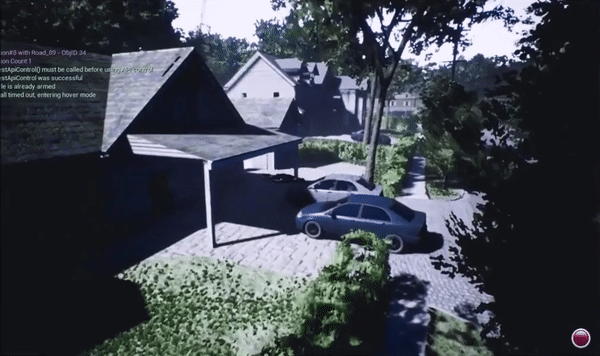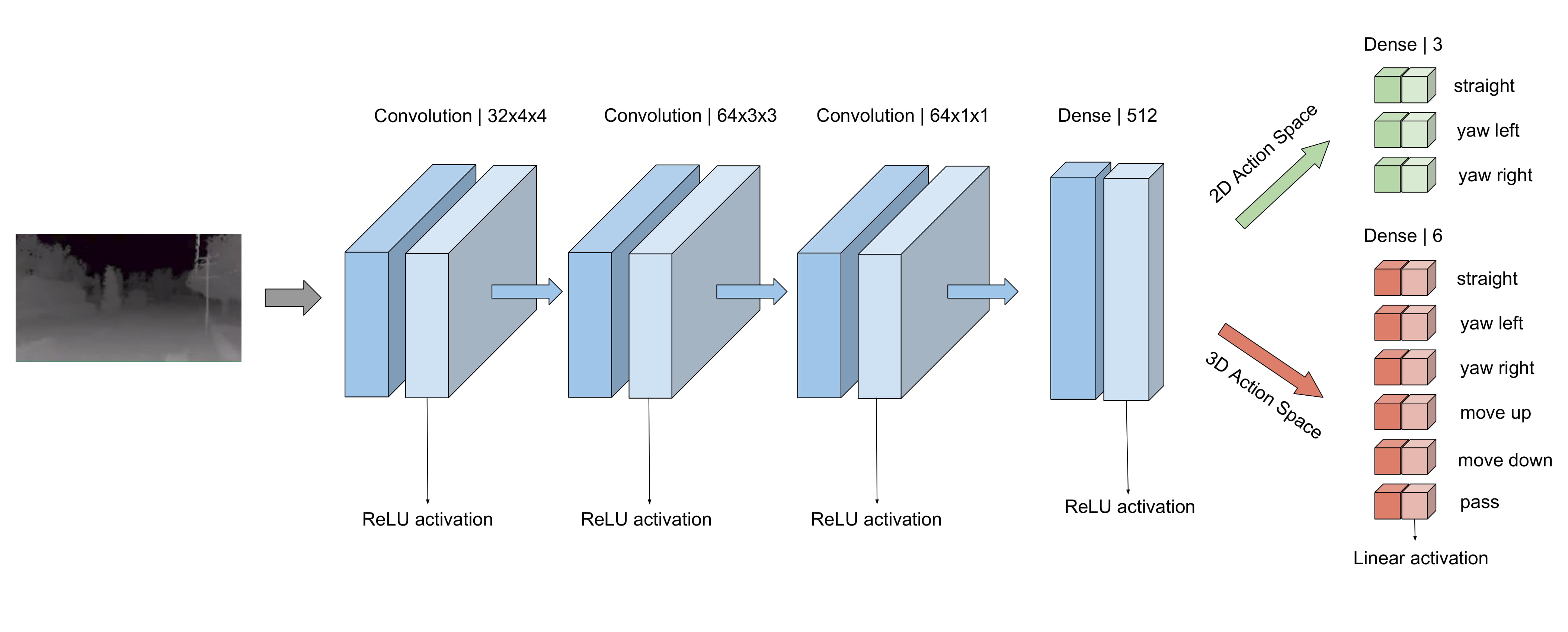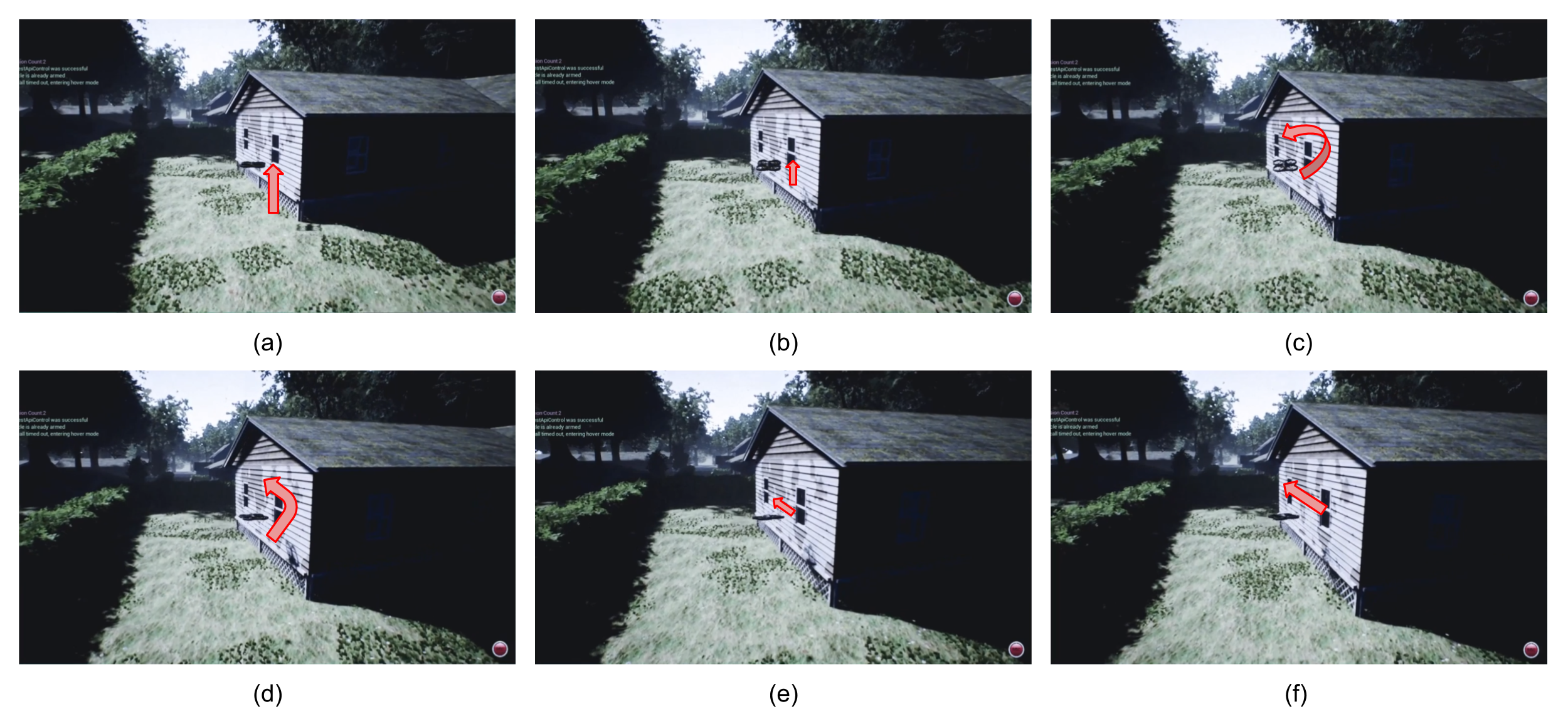RL based navigation
bachelor thesis at IIT Roorkee
with Akshay Walvekar and Anuj Jain
The project aimed at navigation of a quadcopter in AirSIM where the control policy was learned using DQN algorithm with depth image as input to the policy. The quadcopter learned to navigate in an urban environment to reach the destination point. We trained the policy for two cases: 2D and 3D action space to compare the performance. A paper summarising the work was published at IEEE AUTEEE.

Network Architecture
A CNN based network was used as our RL policy where the input to the network was depth image of the front view of the quadcopter. For the 2D action space, there were three final outputs of the network - straight, yaw left and yaw right. While for the 3D action space, there were six - straight, yaw left, yaw right, move up, move down and pass(do nothing).

Rewards
The reward was set up such that the target position reaching for the drone is encouraged. While for collision, a reward of -100 is given. For our destination a curb limit of 400 was set i.e. if the drone takes more than 400 steps to reach the goal then a reward of -100 is given. Finally, reaching the goal before 400 steps, gives a reward of +100. Reward setting for both 2D and 3D cases have been discussed in the paper in depth.
Results
The quadcopter learned to navigate in 2D and 3D action space to reach the final destination position. The trained DQN policy was then tested in AirSIM. A detailed analysis of the results and training of the RL agent has been discussed in the paper.
